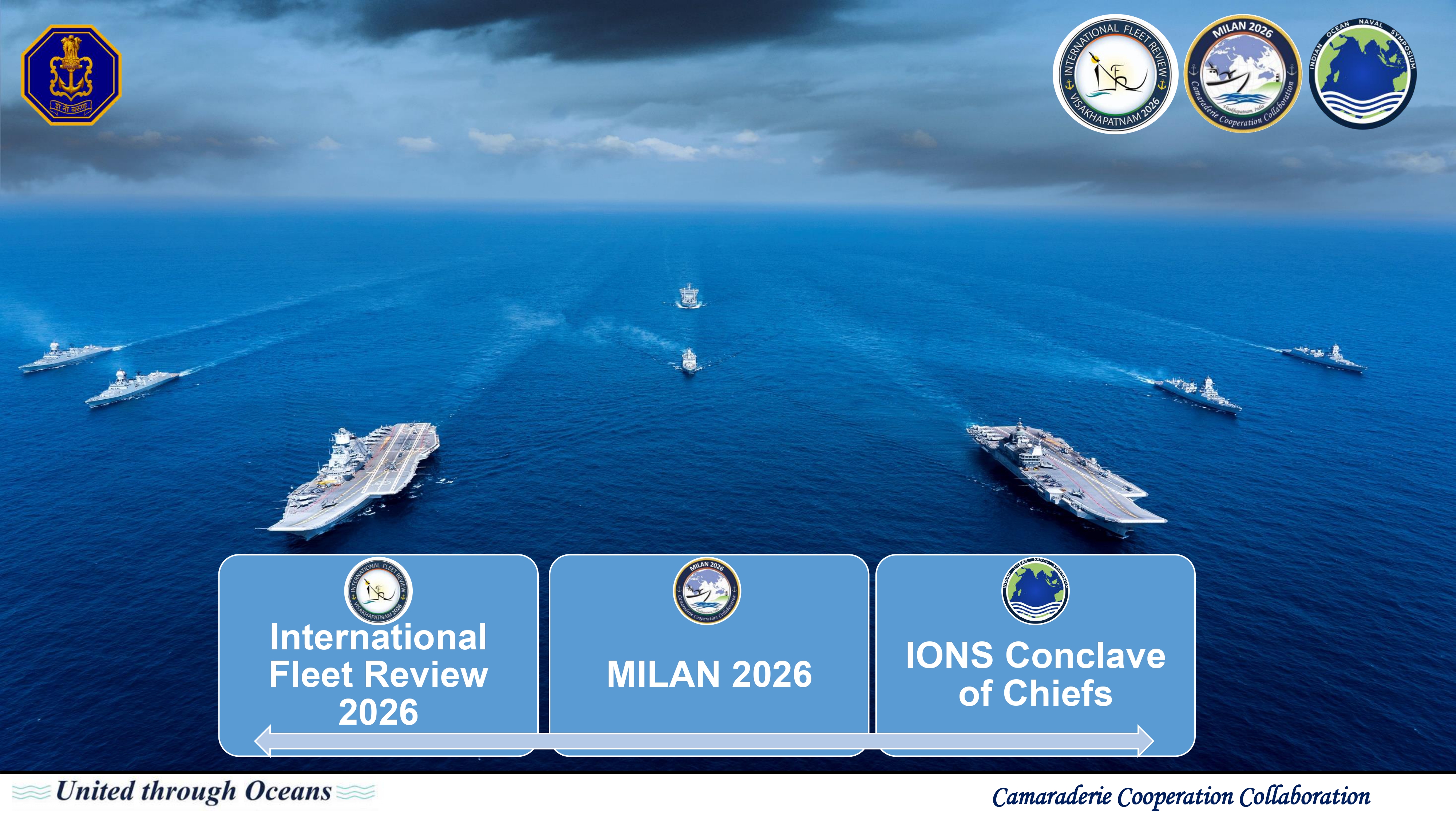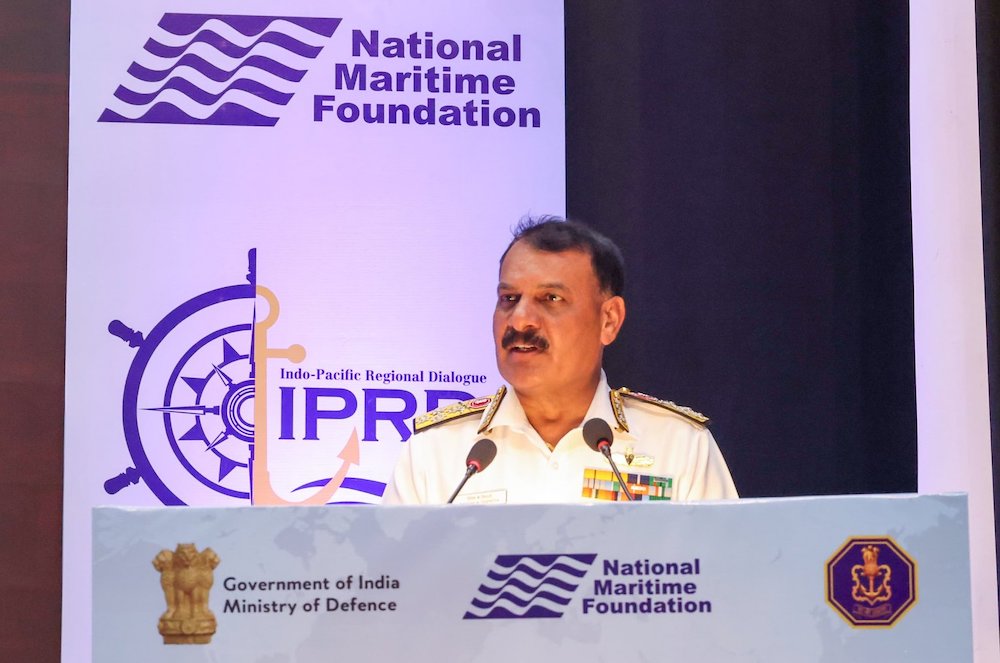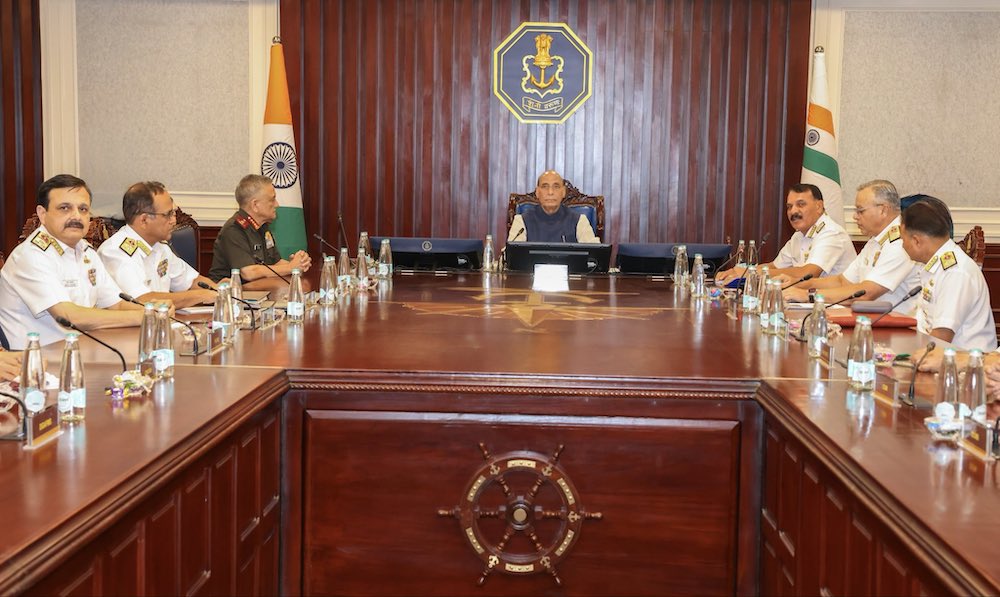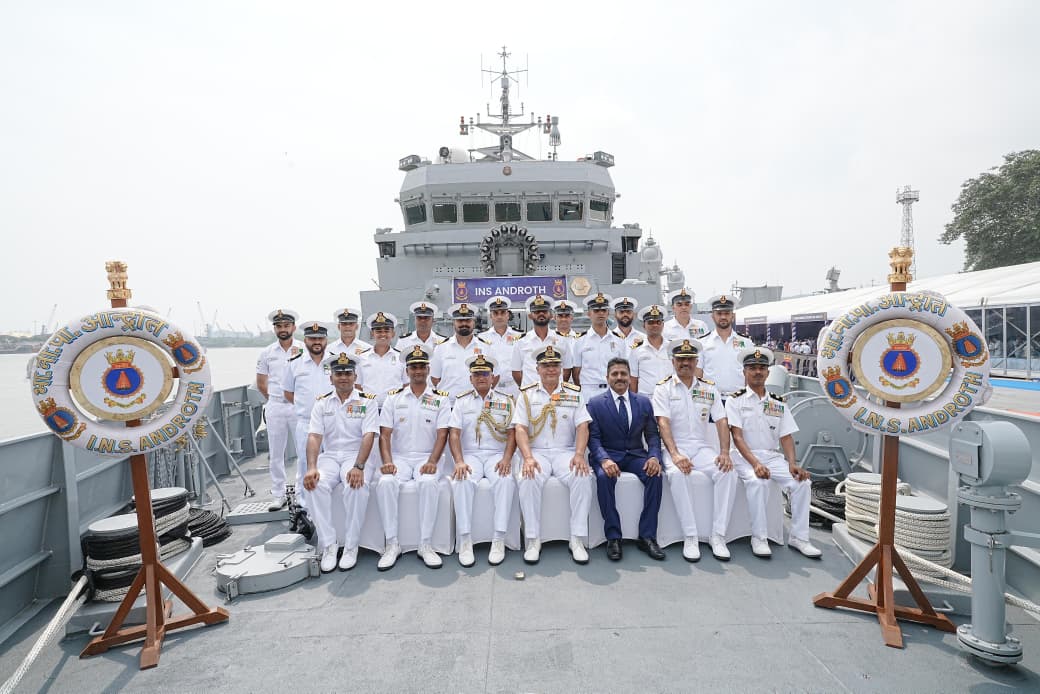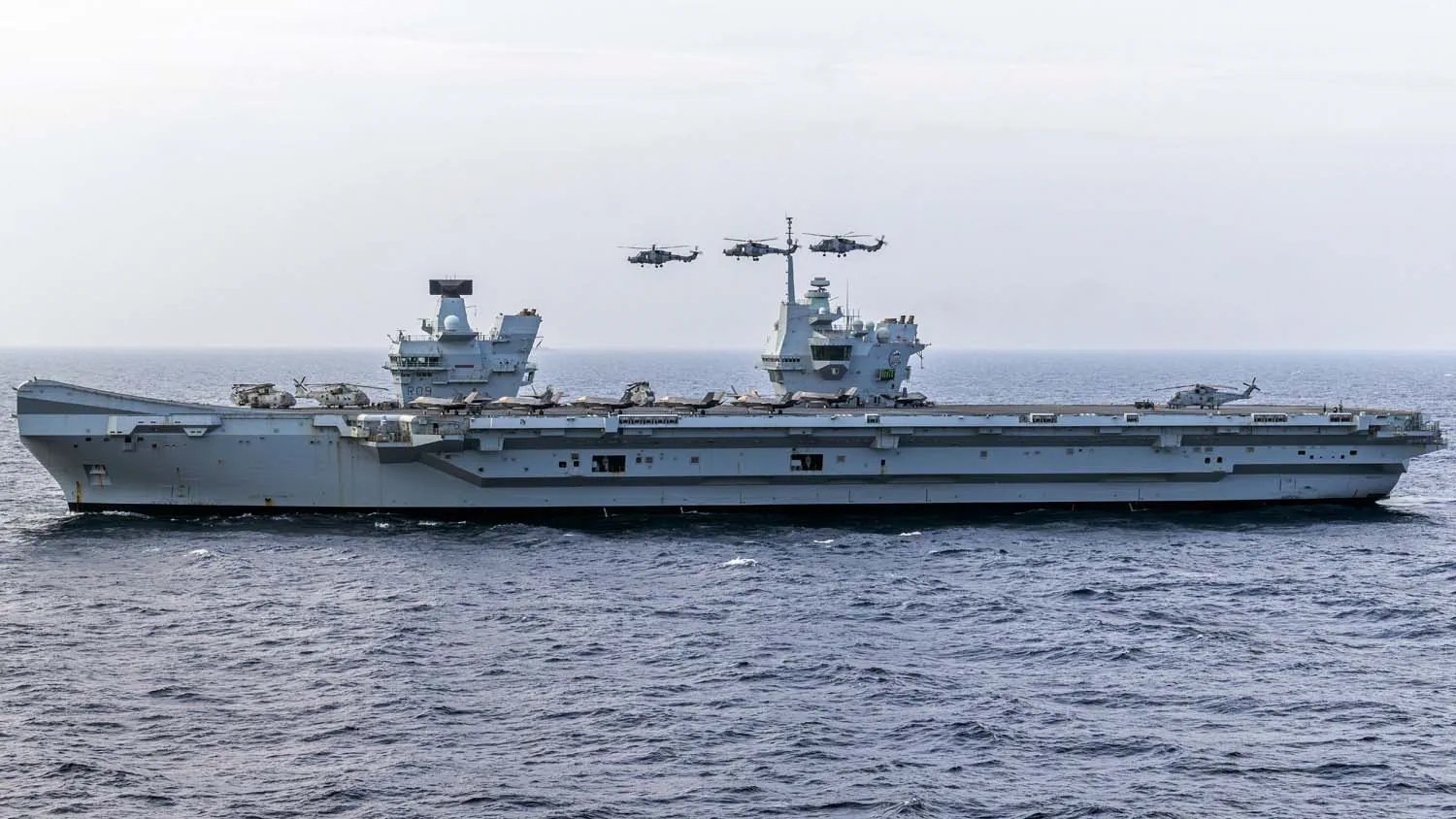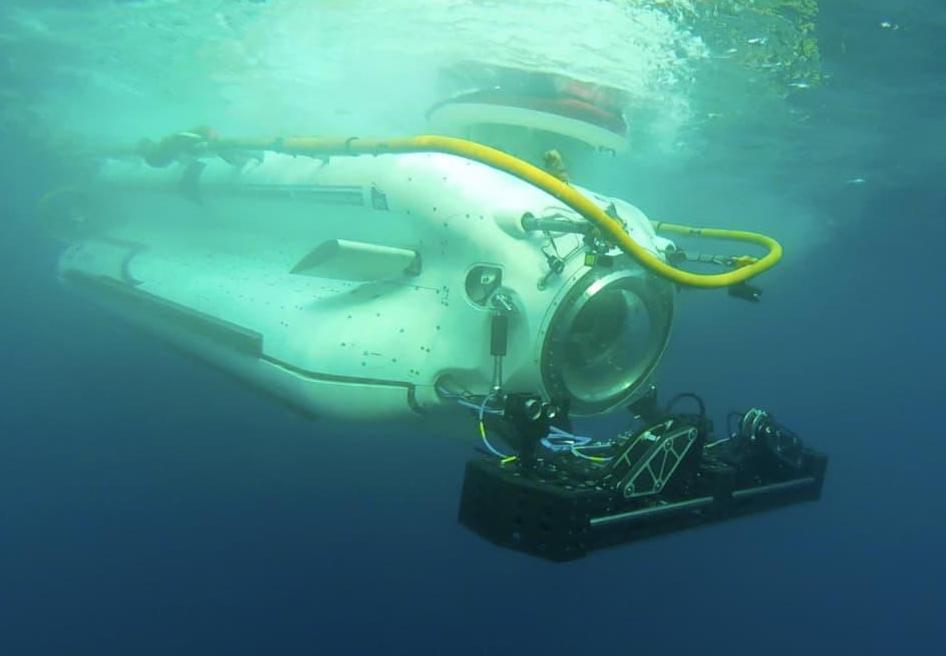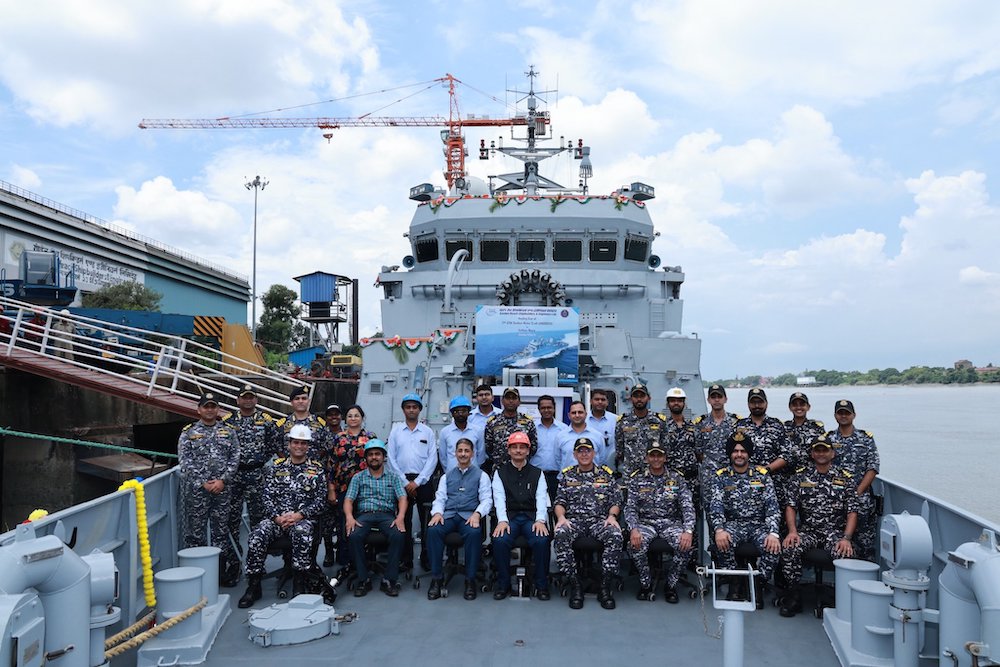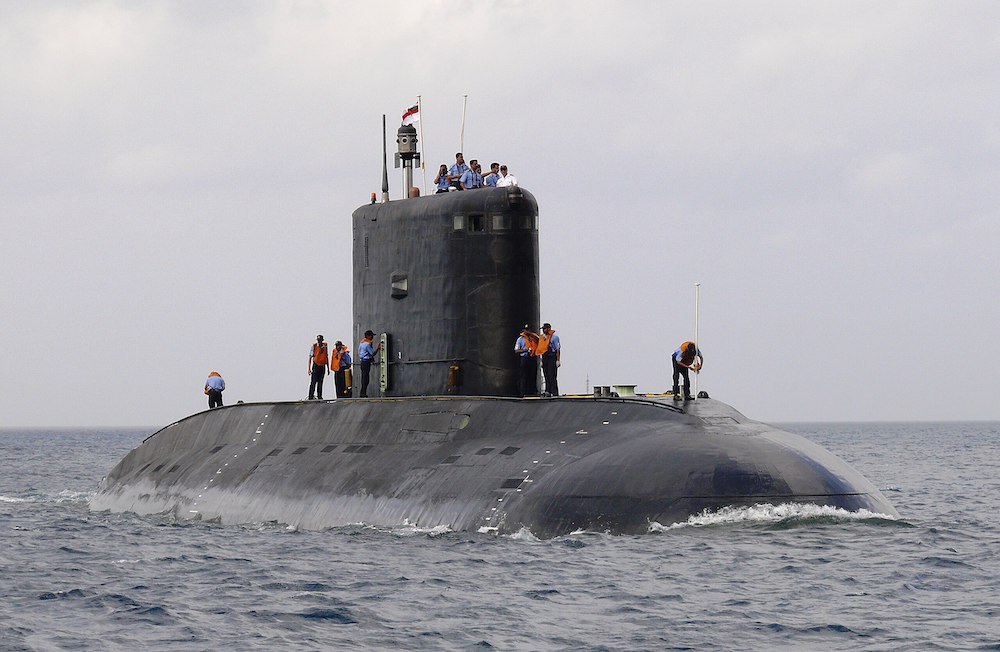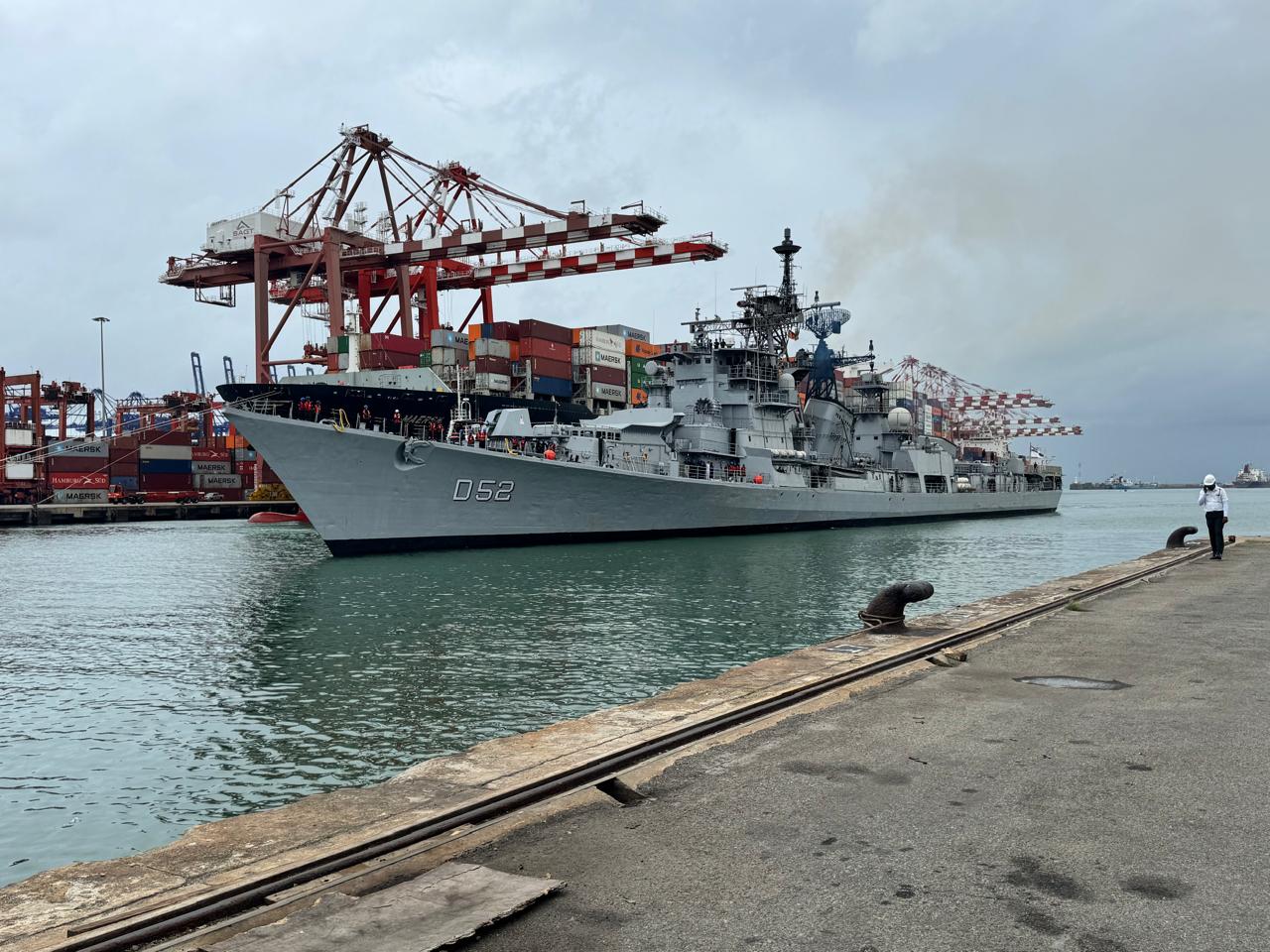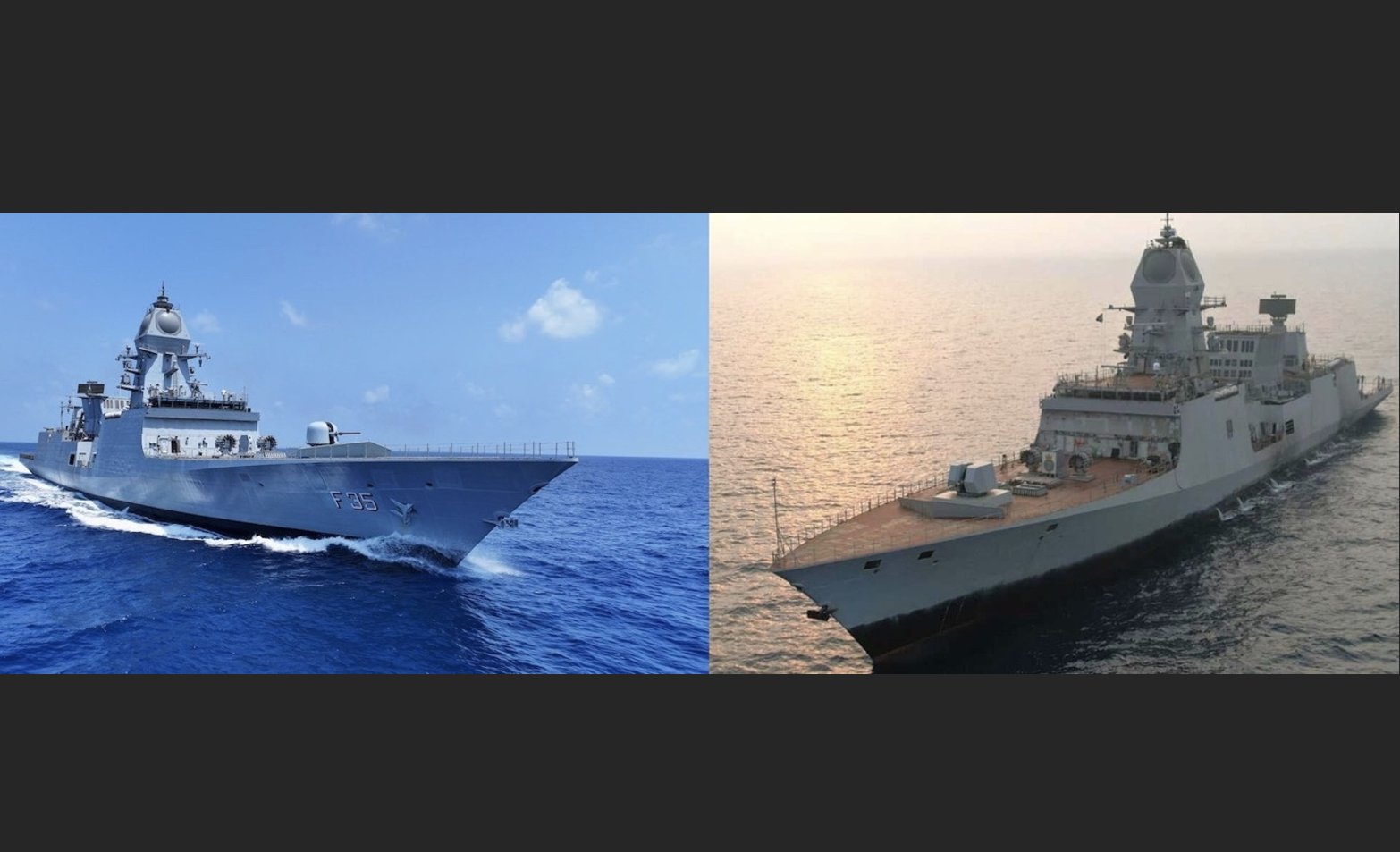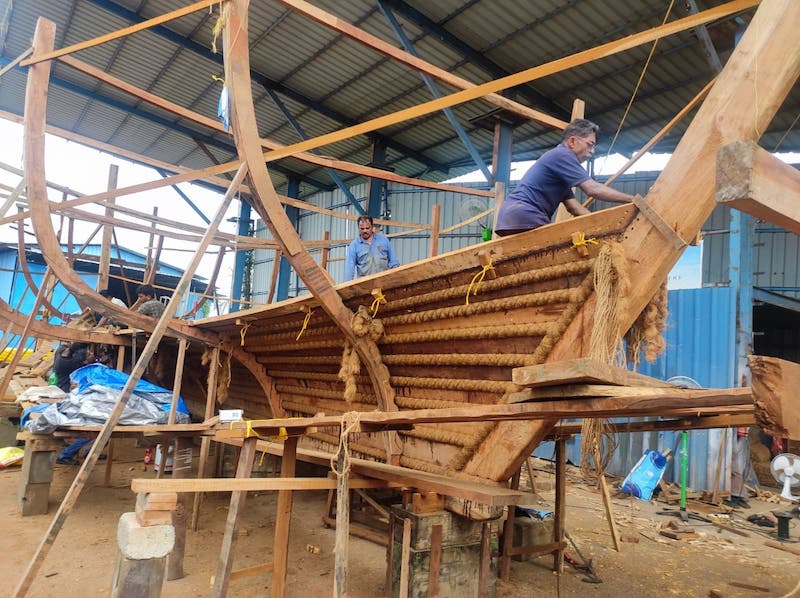 The ship while it was being built. (Photo: Indian Navy)
The ship while it was being built. (Photo: Indian Navy)
New Delhi: On the shores of Karwar, where the rhythm of the sea speaks of epochs gone by, the Indian Navy is poised to welcome a vessel unlike any other in its modern arsenal – a ship stitched not merely with coir and timber, but with the essence of India’s maritime soul. On Wednesday, May 21, 2025, at Naval Base Karwar, history will sail once more as the Indian Navy will ceremonially induct and name a traditionally built “ancient stitched ship” – a full-scale seagoing recreation of a 5th-century CE vessel inspired by the vivid artistry of the Ajanta Caves.
The minister of culture, Gajendra Singh Shekhawat, will be the chief guest of the function, which will see the unveiling of the ship’s name and casting of its anchor.
At the confluence of culture, craftsmanship, and naval ingenuity, the project took its first breath in July 2023 with a tripartite agreement signed between the Ministry of Culture, the Indian Navy, and M/s Hodi Innovations, who undertook the project with the ministry’s funding. From laying the keel on September 12, 2023, to her launch in February 2025 at Hodi Shipyard, Goa, every plank and pinion tells a story of ancient wisdom meeting modern resolve.
At the heart of this resurrection is master shipwright Babu Sankaran, leading a team of traditional artisans from Kerala, who hand-stitched thousands of joints, reviving the nearly lost art of constructing ships without nails or rivets. The “stitched” construction technique, once common across the Indian Ocean trade networks, binds planks using coir ropes, soaked and swelled to seal the hull watertight.
This vessel is no replica – it is a revival.
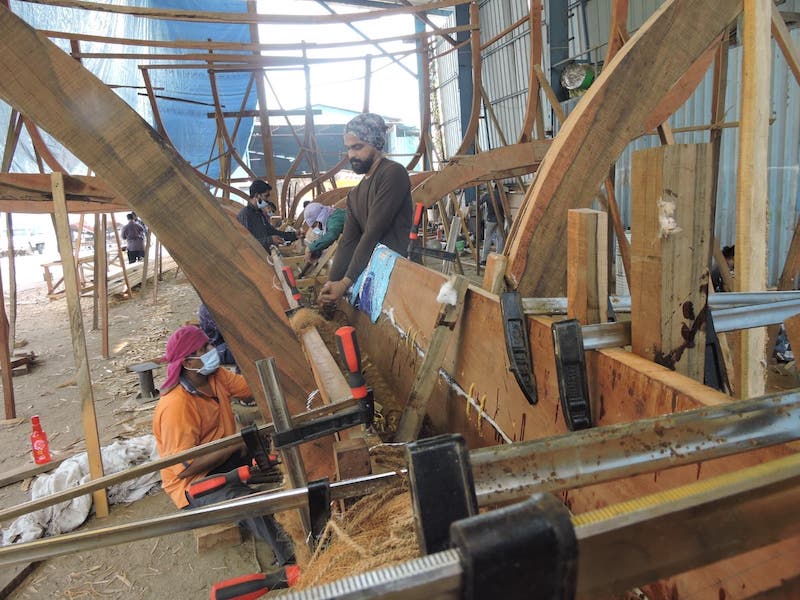 Workers building the ship traditionally in the ancient way. (Photo: Indian Navy)
Workers building the ship traditionally in the ancient way. (Photo: Indian Navy)
Yet, what makes this ship extraordinary is not just the craft, but the collaborative intellect behind it. The Navy spearheaded every phase of the venture – from conceptualization and design to construction – collaborating with Hodi Innovations and scholars of traditional craftsmanship. However, resurrecting a ship from an Ajanta mural, with no surviving blueprint, demanded far more than woodworking. It called for an interdisciplinary odyssey: naval architecture merged with archaeological reconstruction, hydrodynamics, and ancestral know-how.
Working with the Department of Ocean Engineering at IIT Madras, the Navy conducted model testing to analyse hydrodynamic stability. Internally, they performed structural analyses on the wooden mast system – a feat of engineering devoid of modern alloys or composites. The hull, rigging, square sails, and steering oars – all had to be imagined and trialled from the ground up, respecting historical fidelity while ensuring modern seaworthiness.
The result is a vessel both anomalous and astonishing – a ship with square-rigged sails, wooden spars, and traditional steering oars that sails not through an age of GPS and turbines but one ruled by celestial navigation and monsoon winds. In an age of digital automation, this ship is a tribute to the analogue brilliance of ancient India’s maritime enterprise.
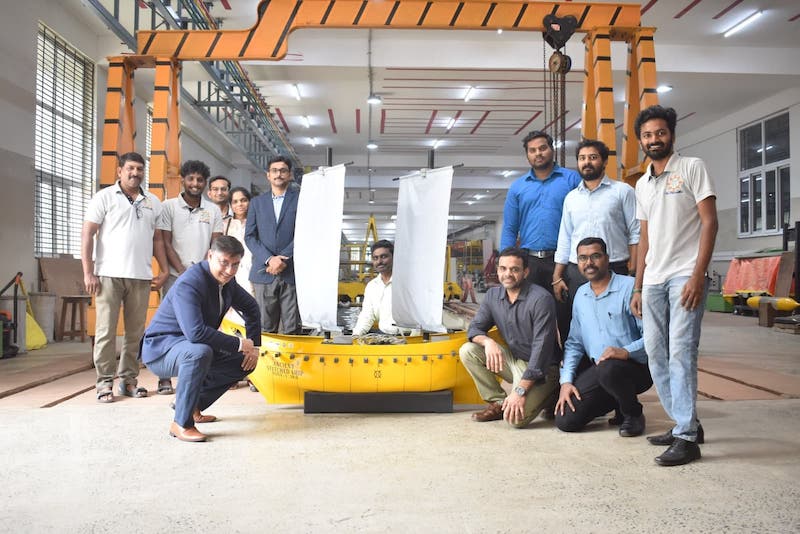 The team behind building the ship. (Photo: Indian Navy)
The team behind building the ship. (Photo: Indian Navy)
While commenting on this illustrious induction, Indian Navy veteran and naval historian Commodore (Dr) Srikant B Kesnur (retired said, “From cave walls to ocean swells, she rises – not stitched with thread, but with memory. On the quiet island of Divar, a grand dream is being reborn – the revival of the ancient art of stitched shipbuilding. What began as one man’s obsession has become a collective passion, drawing historians, naval architects, scientists, shipwrights, and sailors into its fold.”
“This project is more than wood and coir – it is a living tribute to India’s maritime legacy, seamlessly blending tradition with technology, passion with precision. As the Navy, culture ministry, and a dedicated team of visionaries bring this dream to life, they do more than build a ship – they resurrect a civilizational spirit of adventure that once connected trade routes across the Indo-Pacific. This is not just history remembered; it is history reimagined,” he added.
This induction ceremony marks not the end but the beginning of a greater voyage. In its second phase, the ancient stitched ship will embark on a transoceanic expedition, tracing historic trade routes from Gujarat to Oman, rekindling commerce and the spirit of seafaring civilisation. Thus, once again, the Navy will chart a course not merely of strategic strength but of cultural stewardship.
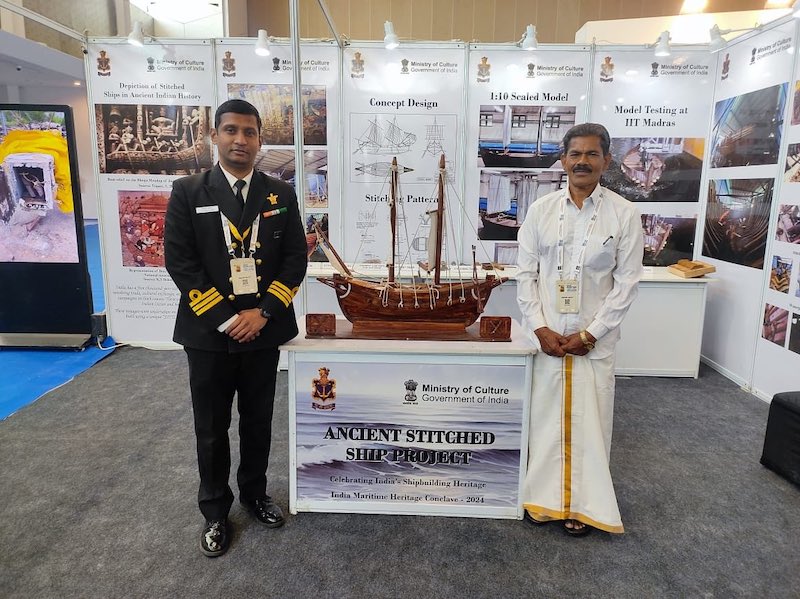 Master shipwright Babu Sankaran (R) with an Indian Navy officer associated with the project. (Photo: Indian Navy)
Master shipwright Babu Sankaran (R) with an Indian Navy officer associated with the project. (Photo: Indian Navy)
This ship does not sail alone. It carries with it the memory of millennia – of merchants and monks, astronomers and navigators, and ports that hummed with sandalwood and silk. Its oars dip into the same waters once crossed by ships from Muziris and Sopara, reanimating a time when India was not merely a land but a luminous node in a world knit by oceans.
In building this vessel, the Indian Navy has restored not just a ship but a story – a story that now sails once more on stitched seams and sovereign dreams. As the sun rises over Karwar on Wednesday, so too does an ancient ship – India’s floating past, inducted into her modern fleet, proof that the tide of time, when steered with vision and reverence, brings heritage full circle.

